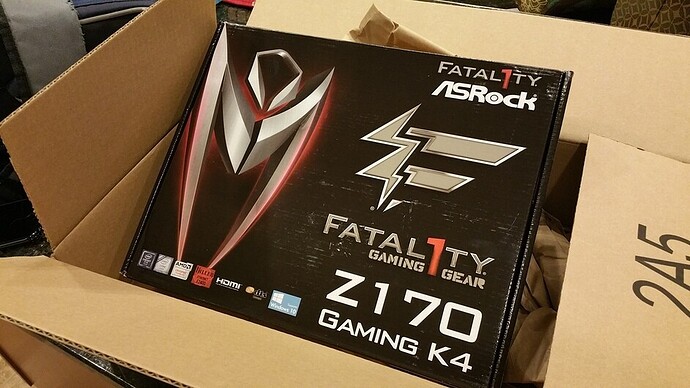As I mentioned in an earlier post, I’ve decided to start a brand new PC build for three very good reasons:
-
My son is of that age where he wants to play games on my PC by himself, so we’re running into a resource issue - there’s only one gaming PC in the house!
-
Building a PC from scratch gets you intimately involved with the details of your PC. There’s no excuse for not knowing the real capabilities and limitations of your machine.
-
I wanted an excuse to go for a radical upgrade beyond “just 'cuz”.
Although assembling a PC is generally very simple, there are several steps with many many different decisions to make. Like a typical engineer, I agonized for too long over many fine details and decisions before finally settling on my parts list. This step is probably the most important of the whole process, so I don’t mind the fact that I took a while to finalize these details.
I used PCPartsPicker.com as a checklist for my build and as a jumping off point for research on parts, but I didn’t stick with their highest recommendation.
Some highlights of the build:
- i7-6700K 4.0 GHz processor
- 1TB SSD drive + 2TB WB Black for storage
- EVGA GE 1080 FTW GPU
- Cooler Master MasterCase Pro 5 Case
Pretty decent build, if I do say myself, although clearly economy was not a driving factor. I could have saved quite a bit by going to a 1070 GPU and a 500 GB SSD and a cheaper case, but I wanted something that would perform smoking hot out of the box, last me a while, and also be modular/portable for future upgrades - I don’t plan on starting a scratch PC build again for a while!
It’s always exciting to get stuff in the mail, but seeing my goods all arrive within a couple days of each other was like the best Christmas ever - except maybe the one where I got my Nintendo Entertainment System for a “late” christmas from m grandmother, months and months after all my friends had gotten theirs. It was rad!
Unfortunately there was one minor snag. The vendor selling my motherboard had run out of stock and I’m not due to get that shipment until Monday. When I scrambled to find another vendor, the price of the mobo had gone up $40 and although I wasn’t exactly frugal on this build to begin with, I couldn’t justify essentially a $40 shipping expedite for just a couple days.
Naturally, I couldn’t wait until I had ALL the parts to start unboxing, so, chores completed, I unboxed stuff today to check it out.
The Master Case is huge, a lot bigger than I was expecting. I had thought my current case was freakishly large, in the box, this thing is ginormous! Although some of the height difference was due to an excellent packing job, the new case is still pretty hefty and will be a tight fit under my desk. I may need to notch out part of the back of the desk to route cables or ensure good airflow. And here are the rest of the goods, sans the motherboard.It’s not really worth it to start putting components into the case, like the power supply or optical drive, as I’ll want the extra maneuvering room when I install the motherboard, so I’m blocked until that shipment comes in.
In the meantime, I’ll just sit here and stare and drool.















